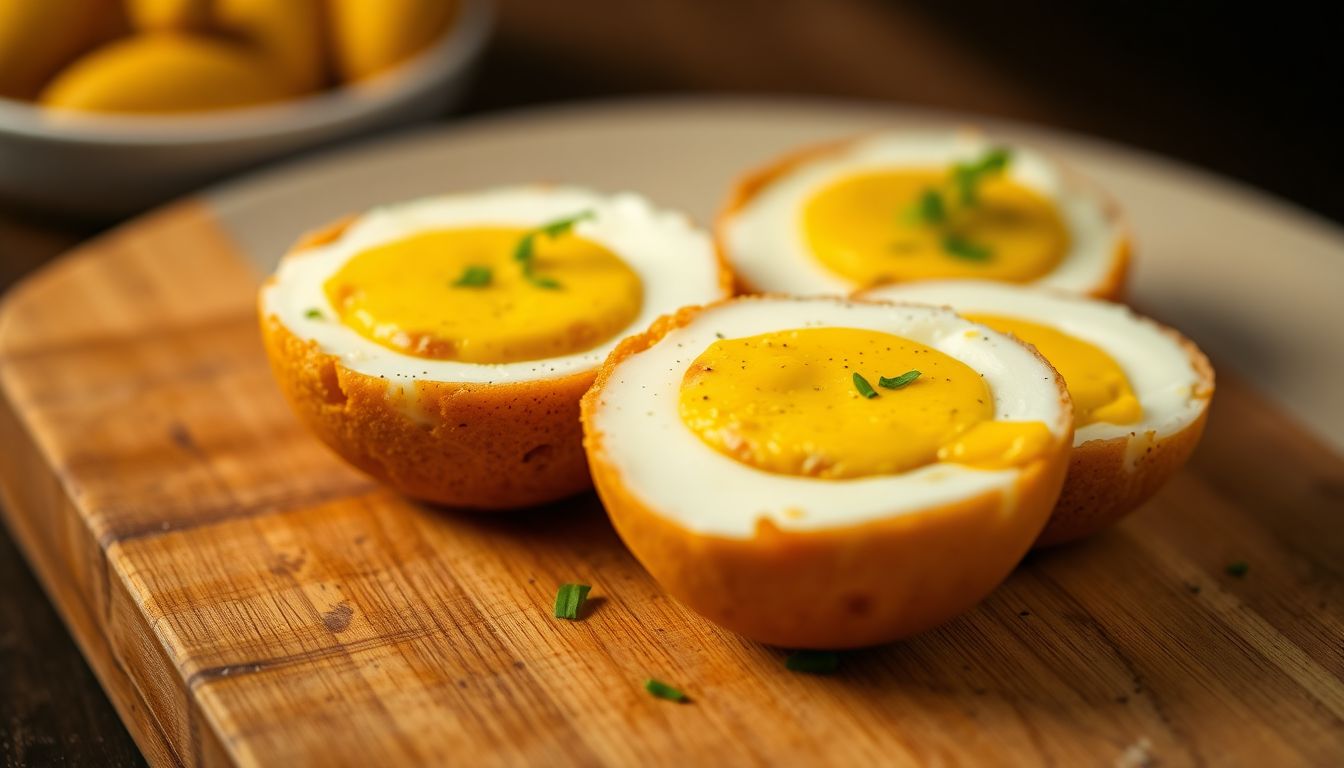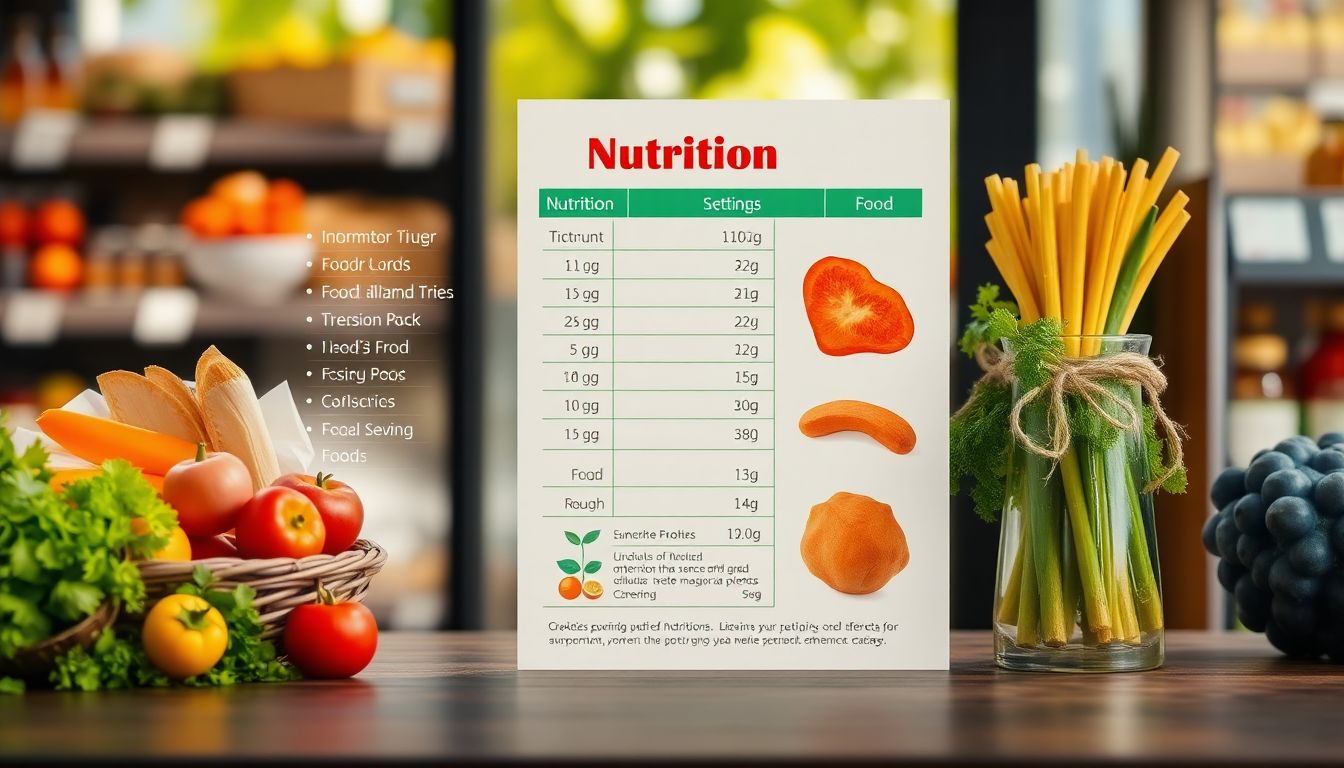Scotch eggs are the quintessential British snack that exudes a sense of nostalgia and culinary ingenuity. These orbs of delight are not just a treat for the taste buds but a celebration of texture and flavor. The golden, crispy breadcrumb exterior encapsulates perfectly seasoned sausage meat, and at the heart of it all lies a soft, runny yolk—a symphony of flavors that is as comforting as it is indulgent. As you bite into one, you embark on a journey through layers of taste and texture, a testament to the artistry of British cuisine.

Learn About Scotch Eggs
Discover how to make delicious scotch eggs, a crispy meatball perfect for snacking.
– Understand the essential ingredients and method for crafting the perfect scotch egg, ensuring a crispy exterior and flavorful filling.
– Learn the step-by-step process for preparing the eggs, making your own breadcrumbs, and frying them to achieve that golden crunch.
– Explore nutritional information and find additional recipes for snacks, eggs, British, and pork dishes to expand your culinary repertoire.
Ingredients
Creating the perfect Scotch eggs is an art form that requires meticulous attention to detail and quality ingredients. Here’s what you’ll need to craft these delicious snacks:
- 10 large free-range eggs
- 800g of high-quality pork sausage meat
- 1 small bunch of fresh parsley, finely chopped
- A few sprigs of fresh thyme, leaves picked
- 1 teaspoon of English mustard
- Sea salt and freshly ground black pepper
- 100g plain flour
- 200g breadcrumbs, preferably homemade
- Vegetable oil, for frying
The quality of your ingredients can make or break your Scotch eggs. Opt for free-range eggs to ensure the yolks are vibrant and flavorful. The sausage meat should be well-seasoned and sourced from a trusted butcher to capture that authentic taste.
Insider Tip: For an added layer of flavor, try incorporating a pinch of nutmeg or a hint of cayenne into the sausage mixture.
A Personal Story: Discovering the Joy of Scotch Eggs
When I was a child, family gatherings often revolved around food, and one dish that always stood out was my grandmother’s scotch eggs. Every Easter, she would prepare a large batch, and the aroma of seasoned sausage meat and boiling eggs would fill her cozy kitchen. It was an event that brought our family together, and I remember eagerly waiting for the moment they were ready to be served.
One Easter, I decided it was time to learn the art of making them myself. Armed with my grandmother’s handwritten recipe, I gathered all the ingredients: fresh eggs, pork sausage, breadcrumbs, and a few spices. As I carefully wrapped the sausage around the eggs, I could almost hear her voice guiding me, reminding me to be gentle yet firm.
After coating them in breadcrumbs and frying them to a golden brown, I felt a rush of excitement. When I finally took a bite, the combination of crispy exterior and flavorful sausage meat paired with the creamy yolk inside was nothing short of divine. In that moment, I realized that making scotch eggs was not just about the food; it was about preserving family traditions and creating new memories.
Sharing those scotch eggs with friends and family that day made me appreciate the role of food in connecting us. It reinforced the idea that cooking is not just a skill but a way to celebrate love and togetherness. From that day onward, scotch eggs became a staple at our gatherings, a delicious reminder of my grandmother’s legacy.
Method
The method of creating Scotch eggs is both a labor of love and a test of skill. It requires patience, precision, and a passion for cooking. Let’s delve into the steps needed to achieve perfection.
To make the scotch eggs
Start by boiling eight of the eggs in a pot of water. For a perfectly runny yolk, cook them for exactly seven minutes. Once done, plunge them into ice-cold water to stop the cooking process. This step is crucial for maintaining that coveted runny yolk. Once cooled, gently peel the eggs and set them aside.
In a mixing bowl, combine the sausage meat with parsley, thyme, mustard, and season generously with salt and pepper. Divide this mixture into eight equal portions. Flatten each portion into a disc and wrap it around an egg, ensuring it’s fully encased with no cracks. This part requires a gentle hand to prevent the egg from breaking.
To make the breadcrumbs
Homemade breadcrumbs are the key to achieving that perfect crispy coating. Take stale bread and blitz it in a food processor until you achieve a fine crumb. Season the breadcrumbs with a pinch of salt and pepper for added flavor.
To fry the scotch eggs
Prepare a bowl each of flour and breadcrumbs, and beat the remaining two eggs in another bowl. Begin by rolling each wrapped egg in flour, then dip it into the beaten eggs, and finally coat it thoroughly with breadcrumbs. This triple-layer coating ensures a robust and crispy exterior.
Heat oil in a deep saucepan to 170°C. Fry the Scotch eggs in batches, ensuring not to overcrowd the pan, for about 8-10 minutes or until golden brown and crispy. Once fried, let them drain on a paper towel to remove excess oil.
Insider Tip: For a healthier version, consider baking the Scotch eggs in the oven at 200°C for 20-25 minutes instead of frying.
Nutrition and extra info
While Scotch eggs are undeniably delicious, it’s important to be mindful of their nutritional content. Each Scotch egg contains approximately:
- Calories: 290
- Protein: 15g
- Carbohydrates: 12g
- Fat: 20g
Though they are a rich snack, moderation is key. Pair them with a light salad for a balanced meal.

For those seeking dietary alternatives, consider using turkey sausage meat or a plant-based substitute for a lighter version of this classic dish.
More egg recipes
Eggs are a versatile ingredient with infinite possibilities. Here are some other delightful egg-based recipes to explore:
- Shakshuka: A North African dish of poached eggs in a spicy tomato sauce, perfect for brunch.
- Spanish Tortilla: A traditional Spanish omelet made with potatoes and onions.
- Egg Curry: A fragrant, spiced curry with boiled eggs, offering a unique twist to the usual curry dishes.
Each of these recipes highlights the egg’s adaptability as a culinary powerhouse.
More snack recipes
If snacks are your forte, explore these tantalizing options that promise to satisfy any craving:
- Pork Pie: A buttery pastry filled with seasoned pork, ideal for picnics.
- Sausage Rolls: Flaky pastry encasing juicy sausage meat, an all-time favorite.
- Cheese Straws: A cheesy, crunchy snack perfect for any occasion.
These snacks are not just a treat for the palate but a homage to traditional British flavors.
More British recipes
British cuisine is a tapestry woven with history and flavor. Here are more recipes to explore:
- Shepherd’s Pie: A comforting dish of minced lamb topped with creamy mashed potatoes.
- Toad in the Hole: Sausages baked in Yorkshire pudding batter, a classic comfort food.
- Cornish Pasties: A savory pastry filled with meat and vegetables, a staple from Cornwall.
Each dish tells a story of Britain’s rich culinary heritage and is worth savoring.
More pork recipes
Pork is a versatile meat that lends itself to a variety of dishes. Here are more recipes to consider:
- Roast Pork Belly: Crispy skin and tender meat, a perfect Sunday roast centerpiece.
- Pulled Pork: Slow-cooked to perfection, this dish is succulent and full of flavor.
- Pork Schnitzel: Breaded and fried, this dish is crispy on the outside and juicy on the inside.
These recipes showcase pork’s ability to star in both traditional and contemporary dishes.
In conclusion, Scotch eggs are not just a snack; they are a culinary adventure. The layers of flavor and texture make them a favorite for many. As you explore this recipe and others, remember that cooking is about experimentation and personal flair. Enjoy the process, and let your taste buds guide you to creating the perfect Scotch egg.
Q & A
Q. What are delicious scotch eggs made of?
A. Delicious scotch eggs consist of hard-boiled eggs wrapped in sausage meat.
Q. How do I make crispy meatballs for scotch eggs?
A. To make crispy meatballs, coat scotch eggs in breadcrumbs and fry them.
Q. Who invented the scotch egg and when did it originate?
A. The scotch egg is believed to have originated in England in the 18th century.
Q. What makes scotch eggs perfect for snacking?
A. Scotch eggs are portable, filling, and packed with flavor, ideal for snacking.
Q. How can I ensure my scotch eggs turn out crispy every time?
A. To ensure crispiness, fry the scotch eggs at the right temperature consistently.
Q. Aren’t scotch eggs too heavy for a snack option?
A. While hearty, scotch eggs can be enjoyed in moderation as a tasty treat